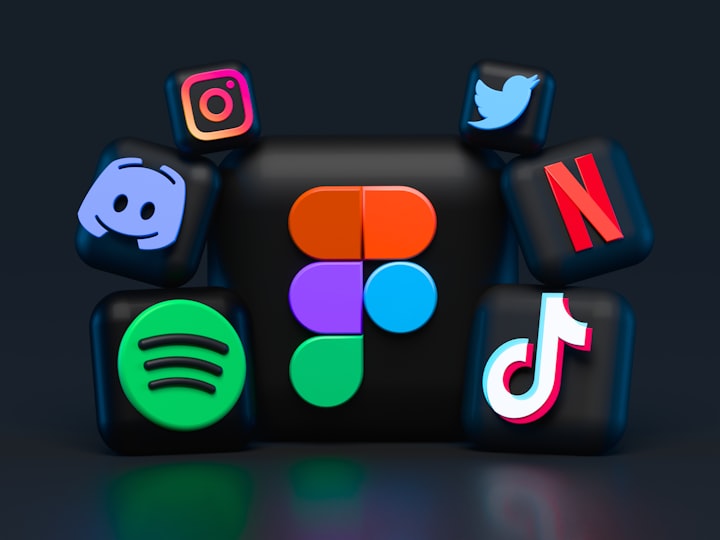Effects of Social Media on Your Brain
Social Media and Human Connections

In the ever-evolving landscape of human communication, social media stands as a remarkable phenomenon, reshaping the way we interact, connect, and perceive the world around us. Yet, beneath the surface allure of likes, shares, and retweets lies a complex interplay between technology and the human brain, a relationship that profoundly influences how we form relationships, process emotions, and navigate the digital realm.
At the heart of this intricate relationship is the understanding that the brain serves as the body's social organ. This foundational concept illuminates why social media has experienced exponential growth over the past decade. As inherently social beings, humans possess an innate desire to connect, share, and belong. Social media platforms have tapped into this fundamental aspect of human nature, offering avenues for instantaneous communication, virtual communities, and curated self-expression.
Research conducted at institutions like UCLA sheds light on the profound impact of cultural experiences mediated through communication on the brain's structure and functioning. Messages disseminated through mass media or exchanged in interpersonal interactions shape neural pathways, influencing how individuals perceive themselves, others, and the world at large. Thus, social media not only reflects societal norms and values but actively contributes to their construction, blurring the boundaries between online and offline realities.
However, amidst the allure of digital connectivity, questions linger about the quality and depth of the connections fostered through social media. While platforms like Facebook, Instagram, and Twitter facilitate communication and information sharing, they often lack the richness and nuance of face-to-face interaction. Studies underscore the importance of nonverbal cues—such as eye contact, facial expressions, tone of voice, posture, gestures, timing, and intensity—in human communication. These cues, primarily processed by the right hemisphere of the brain, play a pivotal role in fostering empathy, understanding, and emotional resonance between individuals.
In contrast, digital communication, dominated by text-based interactions, primarily activates the left hemisphere of the brain. While linguistic communication is undoubtedly essential for conveying information and ideas, it tends to prioritize logical reasoning over emotional attunement. This imbalance risks reducing human interaction to a series of transactions, devoid of the depth and complexity inherent in face-to-face communication.
As developmental theorists and clinicians, there is a growing concern about the potential consequences of excessive digital communication on human development and well-being. The prevalence of social display rules, governed by the left hemisphere of the brain, underscores the shift towards external validation and performative self-presentation in online interactions. This emphasis on curated self-image and validation-seeking behaviors may erode authentic connections and contribute to feelings of loneliness, inadequacy, and social isolation.
Moreover, the rise of digital communication poses significant challenges for the development of emotional intelligence and interpersonal skills, particularly among younger generations. Without the opportunity to practice reading and interpreting nonverbal cues, individuals may struggle to navigate complex social dynamics, resolve conflicts, and cultivate meaningful relationships in the offline world.
However, it's essential to recognize that social media is not inherently detrimental. When used mindfully and in moderation, it can serve as a valuable tool for maintaining social connections, sharing experiences, and accessing diverse perspectives. Moreover, digital communication has the potential to bridge geographical barriers, amplify marginalized voices, and facilitate collective action on pressing social issues.
In conclusion, the relationship between social media and human connection is multifaceted, shaped by intricate interplays between technology, psychology, and neuroscience. While social media offers unprecedented opportunities for communication and self-expression, it also poses significant challenges for the depth and authenticity of human relationships. As we navigate this digital landscape, it's crucial to strike a balance between online and offline interactions, prioritizing meaningful connections, empathy, and emotional resonance in our interactions both on and off-screen. By harnessing the power of technology mindfully and cultivating our capacity for genuine human connection, we can navigate the complexities of the digital age with empathy, resilience, and authenticity.





Comments (1)
Hello, AI is permitted on Vocal. It is a Vocal policy that content created with AI is identified as such at the start of the story/article. Your article/story has many hallmarks of AI-assisted/generated content. You can find the details of the Vocal policy here: https://vocal.media/resources/an-update-from-vocal-on-ai-generated-content, Please amend your piece to be in compliance. If you are not a Vocal+ member you will need to contact Vocal here ([email protected]) and ask them to send your content back into your 'Drafts' where you can edit your story/article/poem. If you don’t correct this the content may be removed by Vocal and/or you may be deleted from the platform. This has been reported to Vocal.